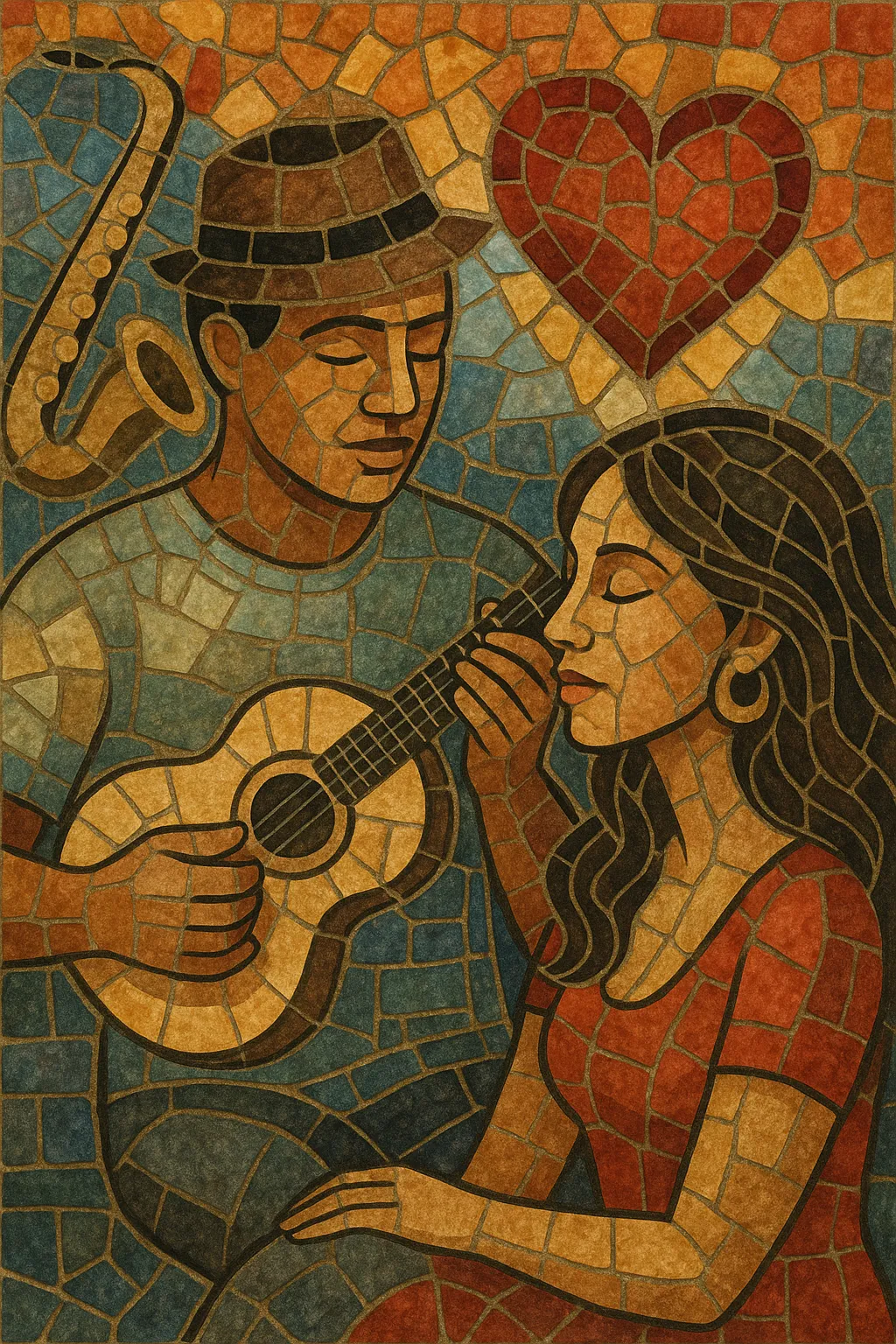Pagode romântico is a polished, radio-friendly branch of Brazilian pagode that centers its narratives on love, longing, and relationships.
Compared with the rootier, roda-de-samba atmosphere of early pagode, it emphasizes smooth vocal harmonies, memorable choruses, and refined studio production. Traditional samba/pagode instruments like cavaquinho, tantan, pandeiro, and repique de mão remain central, but they are often blended with acoustic guitar, keyboards, bass, and occasional saxophone to create a gentler, more sentimental sound.
The style became a major pop force in Brazil during the 1990s and 2000s, with groups delivering midtempo grooves, lush backing vocals, and lyrics that frame romance in accessible, everyday language. It sits at the crossroads of samba, pagode, MPB, and contemporary pop/R&B aesthetics, making it one of the most commercially successful faces of modern samba culture.
Pagode romântico emerged in Brazil in the early-to-mid 1990s as a sleek, sentimental evolution of pagode, itself a popular, ensemble-based offshoot of samba that took root in the 1980s. While classic pagode emphasized the informal roda (circle) vibe, party-ready percussion, and witty everyday lyrics, the romantic strand drew more directly on MPB, pop, and R&B balladry—placing love stories and emotional vulnerability at the center.
By the 1990s, groups such as Raça Negra, Só Pra Contrariar, Exaltasamba, and Soweto helped codify the sound on national radio and television. Productions became more polished: acoustic guitars and keyboards softened the edges of the percussion, backing vocals thickened the choruses, and tempos settled into approachable midtempo grooves ideal for slow dancing. The formula resonated with a mass audience, turning multiple albums into multi-platinum successes and exporting the sound across Lusophone communities.
In the 2000s, a new generation (Sorriso Maroto, Jeito Moleque, Pixote) continued the style with updated pop/R&B sensibilities and glossy arrangements while retaining pagode’s percussive core. Streaming platforms sustained the genre’s reach, and romantic themes—heartbreak, reconciliation, declarations of love—remained its lyrical backbone.
Pagode romântico favors sing-along hooks, call-and-response refrains, and warm vocal blends. Rhythmically, the pulse and syncopation come from the pagode kit (tantan, pandeiro, repique de mão, tamborim) and cavaquinho patterns, but the overall mix is balanced to highlight melody and sentiment. Harmonically, seventh chords, secondary dominants, and occasional borrowed chords support a mellow, sophisticated sheen that aligns it with MPB and contemporary pop balladry.


